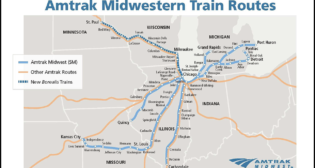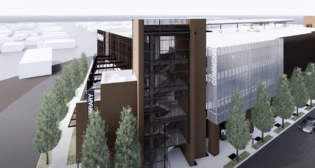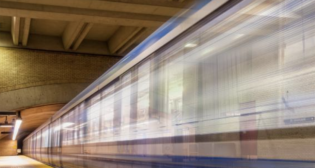
NY Penn Station Reconstruction Design Kicks Off With Notice to Proceed
Written by Carolina Worrell, Senior Editor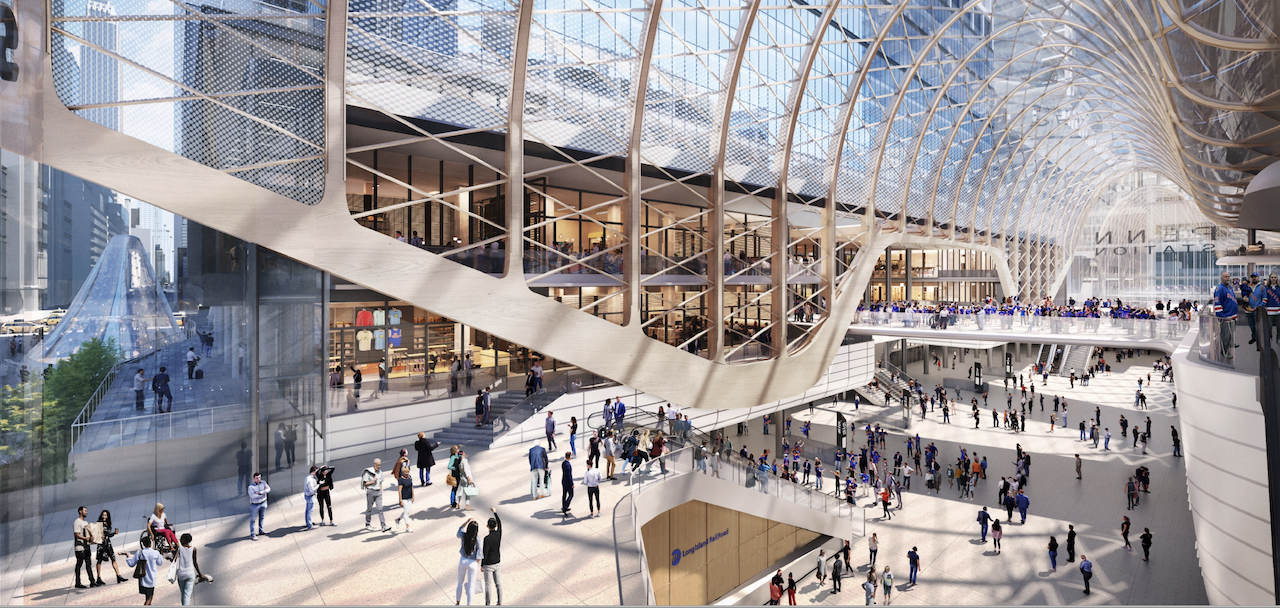
Aerial view of mid-block train hall from 33rd St facing south. (Rendering Courtesy of MTA)
The New York Metropolitan Transportation Authority (MTA) and its railroad partners have issued a Notice to Proceed to kick off preliminary design on a plan to transform the existing Penn Station into a “world-class commuter and intercity transit hub,” the agency recently announced.
According to MTA, the design will be based on the Penn Station Master Plan, a joint planning process undertaken by the railroads, which proposes “a set of solutions to the existing deficiencies of the station that impede safe and efficient movement of passengers, underutilization of property, such as the mid-block taxiway, and takes into account foot traffic patterns to focus on improvements that will best serve users of the station, in a financially efficient way.”

New York State has already appropriated $1.3 billion for Penn Station Reconstruction with additional funding anticipated via cost-sharing among the railroads that use the station and federal grant programs being “aggressively pursued.” The project is included on the Northeast Corridor Project Inventory priority list, making it eligible for Federal-State Partnership funding via the Infrastructure Investment and Jobs Act (IIJA), and an application for preliminary design was submitted in this past spring. These sources, MTA says, make it possible to fund Penn Station Reconstruction without immediate development proceeds from the Pennsylvania Station Area Civic and Land Use Improvement Project General Project Plan (GPP) adopted by Empire State Development.
While Penn Reconstruction can move forward without proceeds from the GPP, MTA says the GPP remains a tool that can be used in the future to support additional infrastructure development. In addition, New York State is committed to exploring opportunities for additional residential development in the Penn Station district.

Penn Reconstruction is both separate and distinct from the future Penn Station Expansion, according to the agency. Both station projects will be subject to federal environmental review. The potential acquisition of property on City Block 780 is not part of the Penn Station Reconstruction project and may only be considered pursuant to the federal environmental review process for Penn Station Expansion. This expansion of Penn Station is “critical to realizing the additional capacity from the construction of a new Hudson River Tunnel under the Gateway Program,” MTA says.
Preliminary Design of Penn Reconstruction
The preliminary design consultant includes WSP|FXC JV, along with noted architect John McAslan, who is recognized for his successful experience designing stations in Sydney, Belfast and New Delhi, and for his design of the reconstruction of Kings Cross Station in London, particularly the skylight in the historic station’s expansion, which created a new train entry hall with an innovative single-span atrium structure that brings in new light and air and creates a central gathering place for commuters.
Penn Station is the Western Hemisphere’s busiest transit hub, serving more passengers than LaGuardia, John F. Kennedy and Newark Airports combined. Currently, its building systems are outdated and do not meet the most current standards for energy efficiency, air quality and comfort. Penn Station, MTA says, is a critical transportation hub for the region and has by far “the highest ridership of any station in in each of the rail networks that utilize the station, helping the New York region boast the highest public transportation use in the country.” Usage will soon increase with the completion of the Penn Station Access project which will bring Metro-North service into Penn Station by 2027. The projected growth of NY/NJ metropolitan region communities is expected to increase the number of daily passenger trips in Penn Station by about 15% from its pre-pandemic levels over the next two decades, from 600,000 in 2019 to 678,000 in 2038.
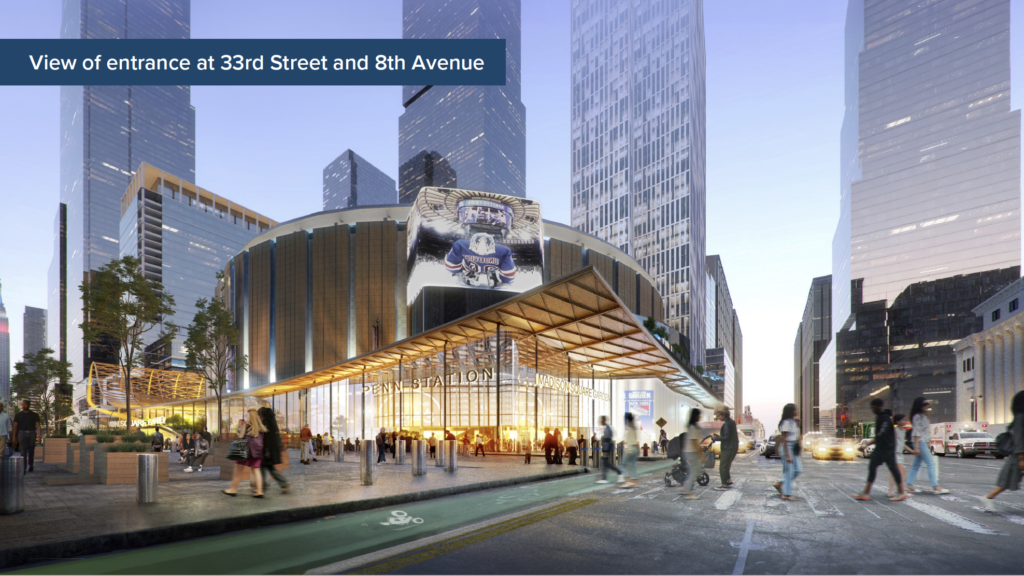
Neighborhood investments in the public realm will be made and may include wider sidewalks, public spaces for events and special occasions, improved wayfinding, and specialized street lighting. “By making a safer and more comfortable public realm, these improvements will allow pedestrians to move seamlessly and safely throughout the entire Penn Station district, with high quality public spaces to enjoy,” MTA says. The Penn Station Area Public Realm Task Force will continue to work with all relevant community stakeholders to develop the goals and objectives for the Penn Station district.
To accomplish these objectives, the agency says it looks forward to starting negotiations with Madison Square Garden (MSG) to “seamlessly integrate the arena with the redesigned Penn Station.”
According to a PIX11 report, the city-issued “special use permit” [regarding MSG] is up for renewal by July 24 and a review process is currently under way by City Planning. Eventually, PIX11 reports, the City Council and the mayor must approve the permit and agreements.

Recent Milestones
The LIRR Concourse Project reached substantial completion in March. This project raised the ceiling to 18 feet, doubled the width of the corridor, enhanced accessibility, constructed an “iconic” New Penn Station Entrance on Seventh Avenue, improved lighting, air flow and wayfinding, “improving the customer experience and increasing circulation with minimal disruption to MSG or the Station’s operations.” Coming soon, MTA says, are new and returning retail and dining options, whose spaces were also completely rehabilitated. Amtrak invested $300 million in Penn Station over the last five years, including the completion of lighting and platform improvements at the track level, improving accessibility with a new elevator being installed at the 32nd Street and 7th Avenue entrance and introducing the year-round public art initiative “Art at Amtrak.”
The announcement of the Notice to Proceed took place with Gov. Kathy Hochul, local elected officials and railroad partners gathering on June 26 to express their “united support for a vision of Penn Station Reconstruction.”

Further Reading:
- RFP Released for NY Penn Station Reconstruction
- New York Penn Station Reconstruction Project Advances
- LIRR: ‘Wider, Brighter’ NY Penn Concourse—With No ‘Head Knockers’
- New York State, City Agree on Penn Station Funding Framework
- For NY Penn Station, a New Path Forward


